Tamron A022 Handleiding
Bekijk gratis de handleiding van Tamron A022 (4 pagina’s), behorend tot de categorie Lens. Deze gids werd als nuttig beoordeeld door 39 mensen en kreeg gemiddeld 4.3 sterren uit 20 reviews. Heb je een vraag over Tamron A022 of wil je andere gebruikers van dit product iets vragen? Stel een vraag
Pagina 1/4

TLM-A022-T/T-1607
SP150-600mm F/5-6.3
Di VC USD G2
(
for Nikon, Canon
)
SP150-600mm F/5-6.3
Di USD G2
(
for Sony
*
Models without the VC
)
Model:
A 022
Owner’s manual
* The Marking is a directive conformity mark of the European Community (EC).
* Das -Zeichen entspricht der EC Norm.
* La marquage est un marquage de conformité à la direcive CEE (CE).
* La marca es marca de conformidad segun directiva de la Comunidad Europea (CE).
* Il marchio attesta la conformita alla directtiva della Comunità Europea (CEE).
* 标志表示符合欧州共同体(EC)指标
The EEC Conformity Report applies to the Council
Directive 2014/30/EU, 2011/65/EU and is used by
Tamron Co., Ltd., manufacturer of this product.
16
14
15
16
14
15
14
2
3
3
Canon
Sony
Nikon
3
2
1
7
8
4
5
12
6
9
13
14
10
11
23
16
15
2021 18 19
1522
17
2021 18 19
1522
17
2019
1517
22

ENGLISH
Thank you for purchasing the Tamron lens as the latest addition to your photographic equipment.
Before using your new lens, please read the contents of this Owner’s Manual thoroughly to
familiarize yourself with your lens and the proper techniques for creating the highest quality images
possible. With proper handling and care, your Tamron lens will give you many years of photographing
beautiful and exciting pictures.
Explains precautions that help to prevent problems.
Explains things you should know in addition to basic operations.
PART NAMES (Refer to Fig. , if not specied)
①
Lens hood
②
Hood attaching alignment mark
③
Hood locking mark
④
Filter ring
⑤
Hood release mark
⑥
Zooming ring
⑦
Focal length scale
⑧
Focal length mark
⑨
Focus ring
⑩
Distance scale
⑪
Distance mark
⑫
Tripod mount
⑬
Tripod mount mark
⑭
Tripod mount locking screw
⑮
Tripod mount release mark (lens side)
⑯
Tripod mount release mark (tripod side)
⑰
Lens attachment mark
⑱
VC (Vibration Compensation) switch
⑲
AF/MF switch
⑳
Focus limiter
㉑
VC mode switch
㉒
Lens-camera interface contacts
㉓
Wide-side zoom lock switch
MAIN SPECIFICATIONS
A022
Focal Length 150-600 mm
Maximum Aperture F/5-6.3
Angle of View 16
˚
25
'
- 4
˚
8
'
Lens Construction 13/21
Minimum Focus Distance 2.2 m (86.6
"
)
Maximum Magnication Ratio 1:3.9 (at 600 mm)
Filter Size
ø
95 mm
Length 257.7 mm (10.1
"
)
*
Diameter
ø
108.4 mm (4.3
"
)
Weight (with tripod mount) 1,990 g (70.2 oz)
*
Lens Hood HA022
*
Values are specications of Nikon products.
Length: Distance from lens front to mount surface.
Features and appearances of lenses listed in this owner's manual are subject to change without
notice.
ATTACHING AND REMOVING THE LENS
Remove the rear cap of the lens. Align the lens attachment mark
⑰
and mounting mark on the
camera, and then insert the lens.
Rotate the lens clockwise until it clicks and locks. (For Nikon models, rotate counterclockwise.)
To remove the lens, turn the lens in the opposite direction while pressing the lens release button on
the camera.
Turn off the power of the camera before attaching or removing the lens.
In the case of Canon cameras, align with the EF lens mark (red circle).
For details, please read the instruction manual of your camera.
SWITCHING FOCUS MODE (Ref. Figs. , & )
To shoot using autofocus (AF), set the AF/MF switch
⑲
to “AF”.
To shoot using manual focus (MF), set the AF/MF switch
⑲
to “MF”, and then use your hand to turn
the focus ring and focus the image.
The distance scale
⑩
is provided as a guideline. It may differ from the actual focus location.
In AF mode, it may be difcult for autofocus to work depending on the subject.
• Through the full-time manual mechanism, when focusing with AF, it is possible to switch to MF by turning
the focus ring while the AF/MF switch is set to AF. AF can be resumed by releasing your nger from the
shutter button and then repressing the shutter button halfway.
• To ensure focus under various conditions, the focus ring
⑨
rotates past the innity (
∞
) position.
Accordingly, always check the focus in the viewnder when shooting with manual focus, even when the
focus is aligned with innity.
• For details, please read the instruction manual of your camera.
VC MECHANISM (Ref. Figs. , & ) (mounted for Nikon and Canon models)
The VC (Vibration Compensation) mechanism reduces image blur caused by hand-held shooting.
How to use VC
When you use VC, set the VC switch
⑱
to ON.
Press the shutter button halfway and conrm that the viewnder image is stable before taking a
picture.
Switching VC mode
You can switch the VC mode by using the VC mode switch
㉑
.
MODE 1
Basic mode that balances nder-image stability and compensation effects
MODE 2
Panning mode
MODE 3
Mode that prioritizes compensation effects, compensating only at the moment the
shutter is released.
*
MODE 1 and MODE 3 do not support panning.
*
For shooting with live view, use MODE 1.
*
Settings can be made using TAP-in Utility only for MODE 1.
VC is effective under the following conditions
Dimly lit locations
Locations where ash photography is prohibited
Locations where the footing is unstable
VC may not perform sufciently under the following conditions
When a photograph is taken from a vehicle that is shaking greatly
Shooting during excessive movement of the camera
When shooting while using a tripod
Set the VC switch to OFF when taking pictures with bulb photography (long exposures).
Otherwise, VC may cause a malfunction.
The viewnder image may become blurred immediately after the shutter button is pressed halfway.
This is due to the principles of VC and not a malfunction.
When the VC switch is set to ON, the number of recordable images is reduced due to the power
used from the camera.
Set the VC switch to OFF when you are shooting while the camera is secured by something other
than your hand (such as a tripod).
Do not remove the lens from the camera while VC is on. If the lens is removed while VC is on, the lens may
make a clicking sound if the lens is shaken. This is not a malfunction. If the lens is installed on the camera,
and the camera’s power is switched on, the sound stops.
In MODE 2 and MODE 3, the effects of VC at the nder may be reduced, but this is not a malfunction.
For Nikon cameras equipped with a built-in ash, VC will be turned off while the built-in ash is charging.
USING THE FOCUS LIMITER (Ref. Figs. , to )
When autofocus is set, switching the focus limiter switch
⑳
can speed up focusing.
To limit the autofocus range to close (1.0 to 2.2 m) subjects (Ref. Fig.
)
Set the focus limiter switch to “10 m-2.2 m”.
To limit the autofocus range to distant (innity to 10 m) subjects (Ref. Fig.
)
Set the focus limiter switch to “
∞
-10 m”.
When not using the focus limiter (Ref. Fig.
)
Set the focus limiter switch to “FULL”.
ZOOMING (Ref. Figs. & )
While looking through the camera’s viewnder, rotate the zooming ring
⑥
of the lens to set the
focal length suitable for the image, and then shoot.
FLEX-ZOOM LOCK MECHANISM (Ref. Figs. , & )
This mechanism is intended to stop the lens from zooming inadvertently at any position. Rotate the
zooming ring to the zoom position, and then apply the lock after you have determined the position.
Setting the zoom lock (Ref. Fig.
)
Move the zooming ring to the subject side until the white mark is visible.
Releasing the zoom lock (Ref. Fig.
)
Move the zooming ring to the camera side.
During activities such as carrying the product, use the wide-side zoom lock to prevent dropping
due to its own weight.
To zoom, release the lock, and then rotate the zooming ring.
Take care not to get your ngers pinched while you switch the zoom lock.
If the camera will not be used for an extended period, release the ex-zoom lock before storage.
LENS HOOD (Ref. Figs. , to )
A bayonet-type lens hood is provided as standard equipment.
We recommend shooting with the hood properly attached because the lens hood eliminates stray
light that may affect the picture.
Using the lens hood (Ref. Figs.
&
)
Align the hood attaching alignment mark
②
of the hood with the hood release mark
⑤
of the
lens.
Rotate the hood in the direction of the arrow until the hood locking mark
③
meets the hood
release mark
⑤
.
Stowing the lens hood (Ref. Fig.
)
You can stow the lens hood by attaching it in reverse.
Align the hood locking mark
③
of the hood with the hood release mark
⑤
of the lens.
Rotate the hood in the direction of the arrow until the hood attaching alignment mark
②
meets
the hood release mark
⑤.
Be aware that the perimeter of the photographed image may be darkened if the hood is not
attached properly.
TRIPOD MOUNT (Ref. Figs. , to )
The A022 model comes with a tripod mount. When you use a tripod, lock the lens rmly to the
tripod using the tripod mount.
Changing the directional position of the camera (Ref. Fig.
)
When you change the directional position of the camera, you can rotate the lens by loosening
the tripod mount locking screw
⑭
.
After determining the shooting position, tightly secure the tripod mount locking screw
⑭
.
Attaching and removing the tripod mount (Ref. Figs.
&
)
You can mount and dismount the lens by loosening the tripod mount locking screw
⑭
, rotating
the lens, and then aligning the release marks
⑮
and
⑯
to the same position.
After attachment, tightly secure the tripod mount locking screw
⑭
.
The A022 tripod mount can be attached to an ARCA-SWISS camera platform.
PRECAUTIONS WHEN SHOOTING
An internal focusing (IF) system is employed to achieve the minimum focus distance. Because of
this, the shooting range is wider than that of lenses using other focusing systems when shooting
at a distance less than innity.
Always remove the hood when you use the built-in ash on the camera for ash photography.
Otherwise, the hood or lens may darken the perimeter of the image. With close-up photography,
the lens itself blocks the ash, and dark semicircle may appear at the bottom of the screen, even
when the lens hood is not used. For ash photography, we recommend that you use an external
ash unit provided by the camera manufacturer.
Differences in the display systems of cameras may result in the display of values different from
the maximum and minimum aperture values in the specications. This is not an indication of an
error.
Use with mirrorless interchangeable-lens cameras is not guaranteed.
Product specificaties
| Merk: | Tamron |
| Categorie: | Lens |
| Model: | A022 |
| Kleur van het product: | Zwart |
| Vorm: | Rond |
| Materiaal: | Kunststof |
| Totale hoogte: | 600 mm |
| Compatibele lensdiameter: | - mm |
| Totale breedte: | 150 mm |
Heb je hulp nodig?
Als je hulp nodig hebt met Tamron A022 stel dan hieronder een vraag en andere gebruikers zullen je antwoorden
Handleiding Lens Tamron
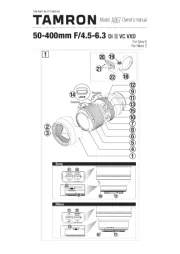
1 September 2025
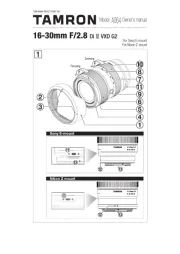
1 September 2025
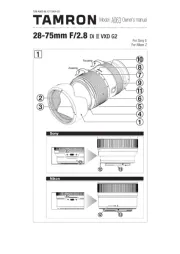
5 Augustus 2025
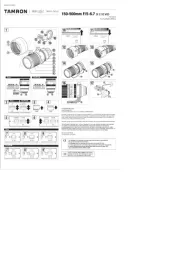
10 Juni 2025

2 April 2025

25 November 2024

16 November 2024

16 November 2024

16 November 2024

16 November 2024
Handleiding Lens
- Tokina
- Yongnuo
- Zeiss
- Hasselblad
- Carl Zeiss
- Sony
- OM SYSTEM
- Nikon
- Axis
- Canon
- Samsung
- Monster Adapter
- DZOFilm
- Fujifilm
- Aputure
Nieuwste handleidingen voor Lens
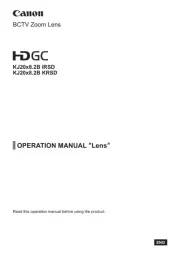
1 September 2025

31 Augustus 2025
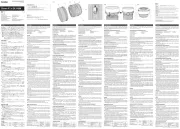
31 Augustus 2025
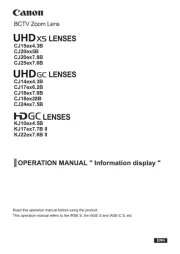
27 Augustus 2025
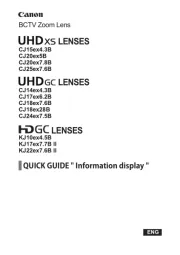
26 Augustus 2025
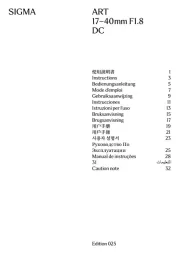
25 Augustus 2025

18 Augustus 2025
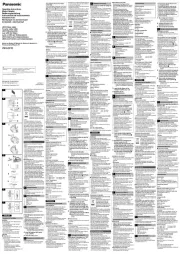
18 Augustus 2025
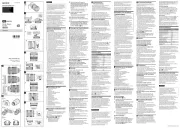
6 Augustus 2025
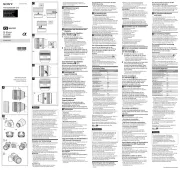
6 Augustus 2025